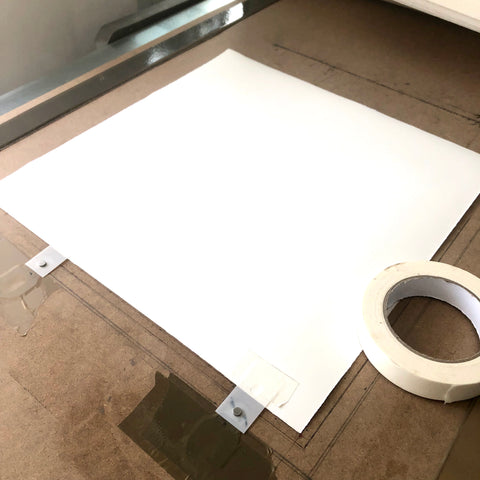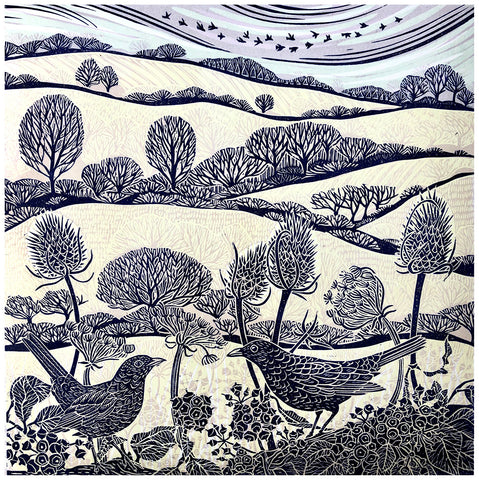Creating Multi-Layered Lino Prints Inspired by the Wild beauty of West Cornwall Using Ternes Burton Registration Pins
As a lino print artist based in Cornwall, I draw constant inspiration from the natural world around me. The landscape, flora, and fauna of this stunning region fuel my creativity and inform my artwork. In this blog post, I would like to share some of my favourite techniques for creating multi-layered lino prints, inspired by the natural world, using Ternes Burton registration pins for precise registration.
Multi-layered lino printing allows for the creation of intricate and beautiful artwork that captures the complexity and beauty of the natural world. Unlike reduction printing, multi-layered lino printing involves using separate linoleum blocks for each colour or element of the final image. This allows for greater flexibility and accuracy when producing complex, multi-layered artwork, and means I can return to each layer of the print to experiment with colour at a later stage. Below is one of three layers of lino carved for the print above entitled Field of Gold Murmuration.

When creating a multi-layered lino print, I begin by drawing from direct observation. Below is the drawing that inspired my Hendra Blue lino print.

Back in my studio I develop my observational drawings, breaking them down into separate layers and adding further detail. Each layer represents a different colour. Once the sketch is complete, I transfer it onto separate linoleum blocks, one for each layer. Then, using my linocut tools, I carefully carve each block, ensuring only the areas I want to remain white in the final print are removed. After carving all the blocks, I use Ternes Burton registration pins to ensure accurate alignment during printing.

Ternes Burton registration pins are a vital tool for precision and accuracy in multi-layered lino printing. I attach the pins to a sheet of MDF on the bed of my printing press and the tabs to the printing paper. The pins and tabs are then used to align each block precisely with the previous one, ensuring perfect registration of all layers.

Using Ternes Burton registration pins not only guarantees precise registration but also makes the multi-layered lino printing process more efficient and less stressful. It allows me to focus on the creative aspects of the artwork rather than worrying about the technicalities of registration.

To create multi-layered lino prints inspired by flora, fauna, and the landscape, I experiment with different colours, textures, and patterns. For example, in a recent print entitled Blackbird Fields of Gold, inspired by the woodlands and countryside near my studio in West Cornwall, I used multiple layers of lino blocks to create the textures and colours of trees in the distance and plants in the foreground. Each layer was carved to gradually build the colours and details. By layering each block on top of the previous one, I can create a sense of depth and detail within the final print.

Similarly, in a print entitled Hendra Blue, inspired by summertime coastal wildflowers and the cliffs near my studio, I used multiple layers of lino blocks to create the details of the plants, cliffs, and sea beyond. Each layer was carefully carved to represent a different aspect of the image. Once again, Ternes Burton registration pins ensured each layer aligned perfectly with the previous one.

Multi-layered lino printing can be a beautiful and intricate art form that requires precision, patience, and skill. Using Ternes Burton registration pins for accurate registration is an efficient and reliable way to ensure that each layer of the print is perfectly aligned with the previous one. By experimenting with different techniques and methods, it is possible to create unique and complex designs that capture the beauty and complexity of the natural world. Whether you are an experienced printmaker or just starting out, I encourage you to explore the possibilities of multi-layered lino printing inspired by the landscape, flora, and fauna.
